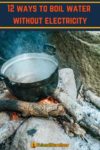Boiling water removes many impurities, including harmful bacteria and viruses. According to the World Health Organization,
“the process of heating water to a rolling boil… is sufficient to inactivate pathogenic bacteria, viruses, and protozoa.”
Most of us use electricity to boil water, but when that’s not an option, some alternatives can be almost as effective.
In a previous post, we explored how to boil water without a pot. If you can get water to a rolling boil without either a pot or electricity, you’ll be able to get clean drinking water wherever you are and regardless of circumstances.
A hurricane could knock out your electricity supply and destroy the contents of your kitchen, but you’d still be able to employ your survival techniques and stay hydrated.
After much searching, 10 hours of YouTube, and trail-and-error DIY attempts, we found 12 ways you could boil water without electricity.
The best ones can boil water in under five minutes, whereas others, like the solar kettle, take a more leisurely approach. The result is clean, palatable water that won’t make you ill.
#1 Campfire
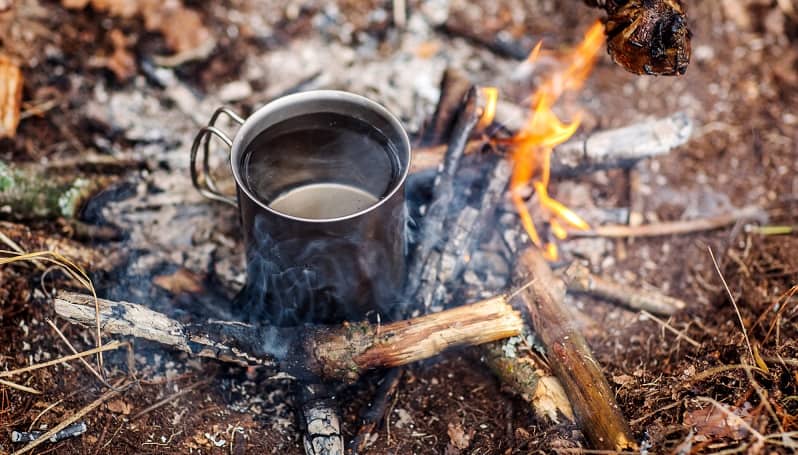
Fire provides heat, light, and energy. It’s one of the most useful survival tools known to humans and is also an easy way to boil water without electricity.
You don’t even need a pot. A piece of birch bark or a leaf can double up as a water container, providing you with potable water in the most extreme situations.
If you arrange your fire carefully enough, you won’t even need a gridiron. With some care and forethought, you can balance your pot, kettle, survival canteen, or bamboo cup on sticks or stones within the fire.
Whatever you use may get blackened by the flames, but the water inside will be clean and relatively palatable.
#2 Rocket Stove
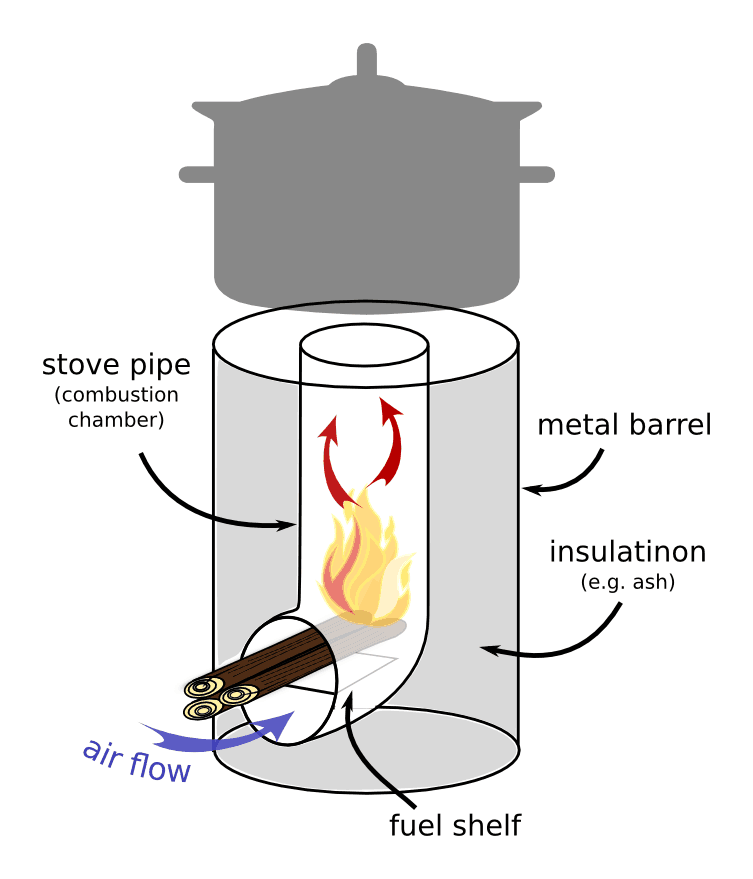
You don’t need to create a huge bonfire to boil water. A rocket stove can do it with just a few twigs or pine cones.
There are various ways to build your own rocket stove, some of which are explored in this video.
Alternatively, you can look around for gadgets like the BioLite CampStove 2. It creates a smoke-free fire so won’t make the water taste strange and charges a backup battery at the same time.
Boiled water tends to have a slightly flat flavor. As it boils, the dissolved oxygen within the water escapes in the form of bubbles.
You can combat this by adding a pinch of salt to every quart or liter of water. Doing this will also help regulate your electrolyte balance and reduce the risk of dehydration.
See more rocket stove designs.
#3 Propane Gas Stove
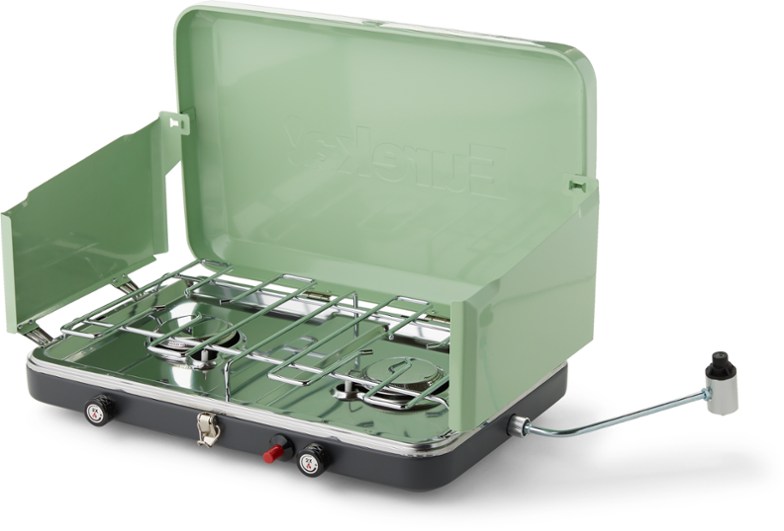
We always use gas to boil the kettle. Electric kettles draw a huge amount of electricity so if you’re trying to reduce your usage or go off-grid altogether, gas is your best option.
All you need is a single-burner propane stove like this one. If you need to boil enough water for a whole family, it could prove time-consuming to use just one burner, in which case a two-burner camp stove is a better option.
#4 Butane Gas Stove
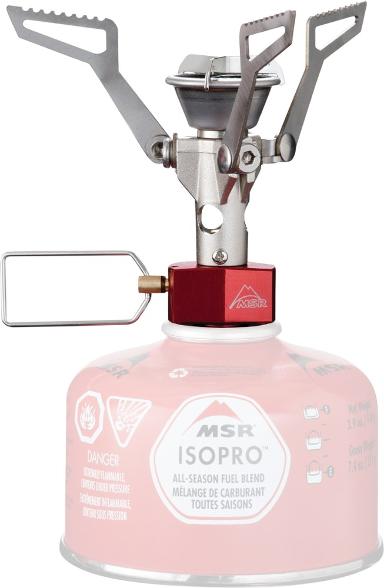
Butane stoves work the same way as propane but tend to be more compact and easier to carry in a backpack.
A good butane camp stove like the MSR PocketRocket can get your water to a rolling boiling in a matter of minutes, giving you drinkable water in under an hour.
#5 Alcohol Stove
Alcohol-burning stoves are compact and affordable. The best models employ an efficient airflow system to ensure they burn quickly and cleanly.
Safer than petroleum-based fuels, the vapors from an alcohol burner are non-explosive and can be quickly extinguished with water.
Denatured alcohol is a renewable fuel and is, therefore, better for the environment than either propane or butane.
#7 The Tuna Can Stove
I stole this idea from my colleague, Diane Vukovic. She wrote about it in her in-depth article on 22 ways to cook without electricity.
There are plenty of videos around showing you how to make an alcohol burner from a tuna can (like the one above), but few references to the method Diane learned while hiking with a former Israeli Special Forces soldier.
The oil from the tuna acts as your fuel source. Lay a few sheets of toilet paper over the top of the tuna. As these absorb the oil, they’re transformed into effective fire starters.
Once you set the toilet paper alight, the oil in the can will burn for up to 25 minutes, giving you more than enough time to heat water to a rolling boil.
As Diane points out, you will need a pot stand to hold your water container as placing it directly on top of the tuna can will starve your fire of oxygen and extinguish the flame.
#7 Tealight Oven
A single tealight doesn’t produce enough heat to boil water but if you put several together, you should be able to get a pot of water to the boil. Five tea lights can produce around 225℉, which is just enough to get water to boil.
If you’ve got no other options available when the grid’s down and the tap water’s contaminated, you could make a DIY tea light oven. This can either be a very simple, or extremely complex process depending on your approach.
The video above shows you how to make a simple tealight oven using an old can and a single tea light.
This is sufficient to heat the can’s contents, but not enough to boil water. To do that, you simply need a larger can. A #10 can, for instance, should be large enough to hold at least four, maybe five, tea lights and would prove far more effective at boiling water.
A more complex approach involves a lot more tea lights and an old toaster oven so, if you don’t have one of those lying around, you’re better off either sticking with the simple approach or looking around for a Home Emergency Radiant Cooking (HERC) Oven.
This tea light oven can do a lot more than boil water. Fueled by 20 tea lights, it creates enough heat to bake bread or roast a chicken. The HERC XXL uses convection and electromagnetic radiation to create heat, which it then stores in quarry stones.
#8 Solar Kettle
Probably the most energy-efficient way of boiling water, a solar kettle uses a thermal vacuum tube to absorb and convert the sun’s rays into heat.
The best solar kettles feature exterior reflectors that maximize solar energy, making the water boil quicker.
Unfortunately, even the most efficient solar kettle will take around 45 minutes to boil a pot of water.
Bear in mind that the Environmental Protection Agency (EPA) recommends boiling water for at least one minute at lower altitudes and three minutes at altitudes above 5,000 feet. That means you need to wait around an hour before your water is safe to drink.
While not the best if you’re on the brink of dehydration, solar kettles provide a reliable and environmentally-friendly to boil water in survival situations, as well as while camping or traveling.
#9 Canned Heat Burners
Canned heat burners use alcohol but not in the same form as alcohol burners. Burners like this one use jellied alcohol.
Designed more to keep food hot than to cook a meal, gelled fuel burners can get hot enough to boil a cup or two of water, but they’re not particularly efficient about it.
Big Dan the Blogging Man experimented using Sterno canned heat to boil water. He discovered that a single cup of water in a covered pot takes around 12 minutes to boil, which isn’t bad. Two cups take over 20 minutes and consumed around half a can of fuel in the process.
This isn’t as long as a solar kettle takes, and as green canned heat is relatively affordable, it’s fairly cost-effective.
Personally, I’d still opt for a pure alcohol stove even though the canned version has a longer shelf life.
#10 Car Kettle
Even when the grid’s down and your house has been reduced to a pile of rubble, you might be lucky enough to have a car that’s still full of fuel.
Using your car’s power, you can boil water in much the same way as you would using electricity.
Portable car kettles are designed to run on 12 volts so all you have to do is plug it into your car’s cigarette lighter socket and wait for… 50 minutes! While not the quickest way to get clean water, a car kettle is, nevertheless, simple and convenient.
You can even use it to rustle up some noodles or boil an egg once you’ve quenched your thirst.
#11 Portable Power Station
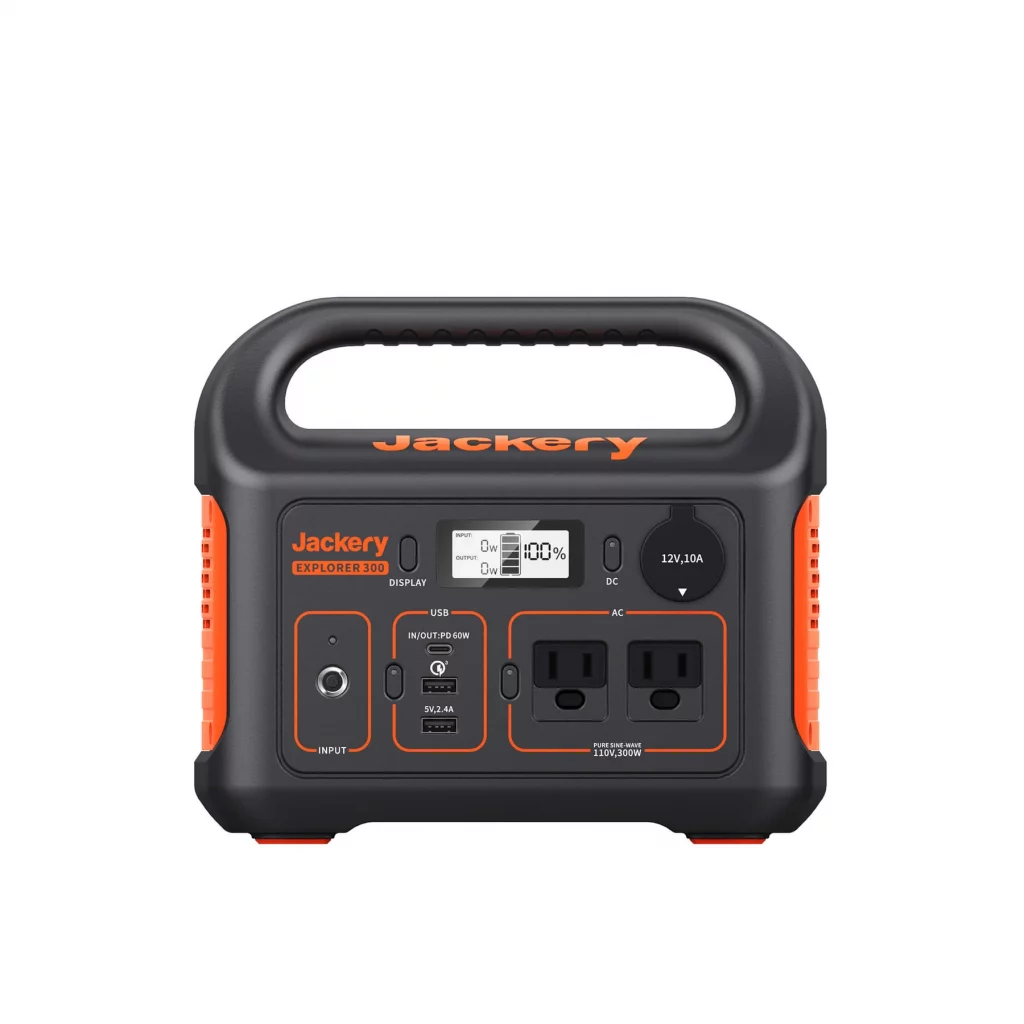
Arguably the most expensive approach to boiling water, a good portable power station can generate enough energy to boil a 500w kettle.
This method will only work if you have solar panels to charge the device. If you’re relying on wall outlets, you’ll simply experience the same problem that left you searching around for ways to boil water without electricity in the first place.
A portable power station is great for many things but, when it comes to boiling water, it’s neither cost-effective nor particularly efficient.
#12 Hexamine Stove
More commonly used as firelighters than fuel, hexamine tablets are affordable and easy to transport. Using a basic stove like this one, you can use a single tablet to boil around 500ml of water. This process will take just 8 minutes, making it surprisingly efficient.
While hexamine tablets burn without creating smoke, they can produce noxious fumes, including ammonia, formaldehyde, hydrogen cyanide, and nitrogen oxide.
Inhaling these fumes can cause nausea, vomiting, and in more severe cases, kidney damage.
Conclusion
People all over the world boil water without electricity every day. It doesn’t need to be a complicated or expensive process, especially not if you’ve got some relevant knowledge and bush skills to apply.
This is by no means an exhaustive list of all the ways you can boil water, and if you come across a particularly innovative approach, we’d love to hear about it.
